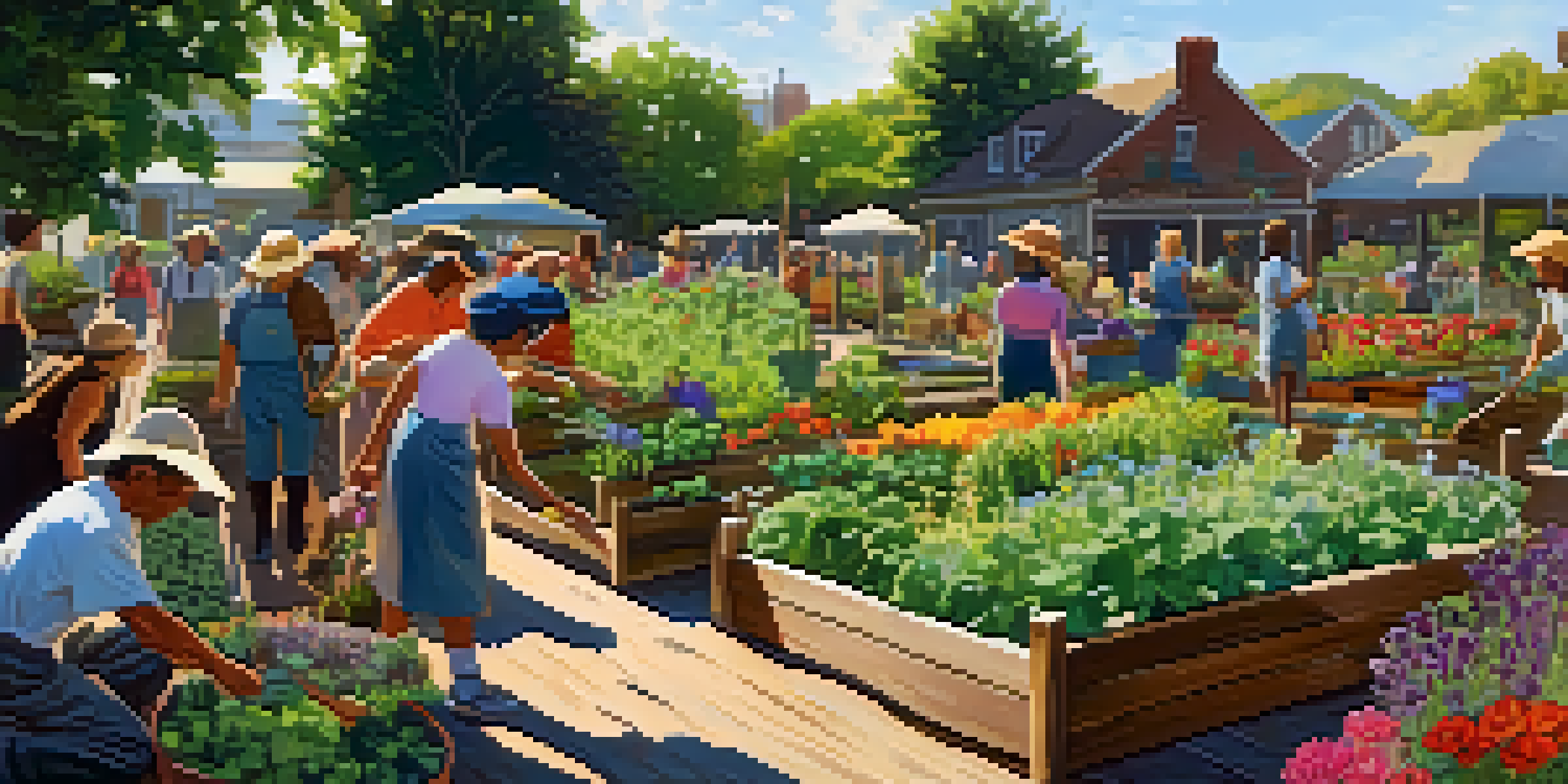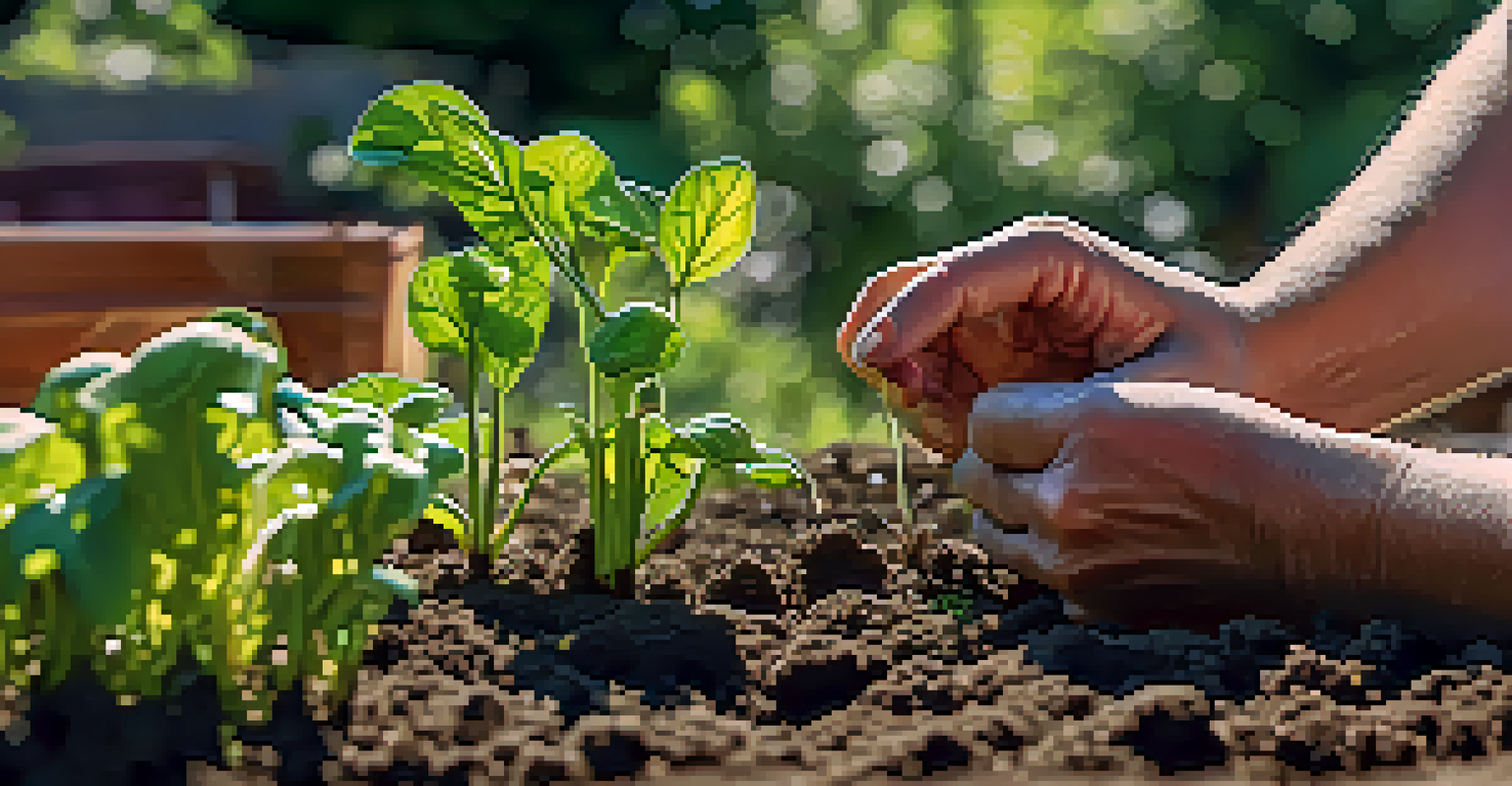How to Start a Community Garden for Health and Wellness

Understanding the Benefits of a Community Garden
A community garden offers a plethora of benefits, starting with improved access to fresh produce. When you grow your own fruits and vegetables, you can enjoy organic options right at your fingertips, reducing reliance on store-bought items. Community gardens also foster a sense of belonging, bringing neighbors together in a shared endeavor.
To forget how to dig the earth and to tend the soil is to forget ourselves.
In addition to fresh food, these gardens promote physical activity. Gardening is a great way to stay active, as it involves digging, planting, and maintaining plants. Plus, spending time outdoors can boost your mood and mental well-being, making it a holistic approach to health.
Moreover, community gardens can enhance local biodiversity. They provide habitats for various pollinators and beneficial insects, contributing to a healthier ecosystem. This connection to nature can foster a greater appreciation for the environment among community members.
Identifying the Right Location for Your Garden
Choosing the right location is crucial for the success of your community garden. Look for spaces that receive ample sunlight—ideally, 6-8 hours a day—as most vegetables thrive in bright conditions. Accessibility is also key; the garden should be easy for all community members to reach.

Consider the soil quality and drainage of the area. If the soil is poor, you might need to amend it or use raised beds to provide a suitable growing medium. Also, check for potential contaminants if the site has a history of industrial use; a soil test can help clarify any concerns.
Community Gardens Boost Fresh Food Access
These gardens provide organic produce right at your fingertips, reducing dependence on store-bought items.
Finally, think about the surrounding community. Is there a nearby population that will actively participate in the garden? Engaging local residents early on can help you select a location that meets everyone's needs and encourages participation.
Gathering Community Support and Involvement
Building a community garden requires enthusiastic support from local residents. Start by hosting an informational meeting to gauge interest and gather ideas from the community. This collaborative approach not only encourages participation but also helps identify potential leaders for the garden.
The best time to plant a tree was twenty years ago. The second best time is now.
Creating a social media presence can also help spread the word and attract more volunteers. Share updates on the garden's development, upcoming events, and how individuals can get involved. Engaging visuals of plants, progress, and community gatherings can inspire others to join.
Additionally, consider reaching out to local organizations and businesses for partnerships. They may offer resources, funding, or materials to help get the garden off the ground. Building these relationships can strengthen community ties and enhance the overall success of the garden.
Planning the Layout and Choosing What to Grow
Once you have community support, it’s time to plan the garden's layout. Consider including a variety of garden plots, such as individual plots for members and communal spaces for shared crops. This diversity allows members to grow what they love while also fostering collaboration.
Selecting the right plants is equally important. Opt for a mix of vegetables, herbs, and flowers that thrive in your climate and soil conditions. It's also worth considering the preferences of your community—growing plants that neighbors enjoy can increase participation and excitement.
Engagement Drives Garden Success
Building community support through meetings and social media fosters participation and strengthens ties among members.
Lastly, think about how to rotate crops each season. Crop rotation is essential for maintaining soil health and preventing pests and diseases. By planning ahead, you can ensure a vibrant and productive garden that continues to flourish year after year.
Establishing Guidelines and Responsibilities
Setting clear guidelines for your community garden is vital for its smooth operation. Establish roles and responsibilities for members to ensure everyone understands their contributions. This can include tasks like planting, weeding, watering, and harvesting.
Create a shared calendar to keep track of activities and maintenance schedules. Regular meetings can help address any concerns and keep the lines of communication open among members. This collaborative approach fosters accountability and strengthens community bonds.
It's also important to establish rules regarding shared spaces and the usage of communal resources. Clear guidelines can prevent misunderstandings and ensure that everyone has a positive experience in the garden.
Incorporating Health and Wellness Activities
A community garden can be more than just a space for growing food; it can also serve as a venue for health and wellness activities. Consider organizing workshops on topics like nutrition, cooking, or gardening techniques. These events can empower community members to make healthier choices.
Incorporating fitness activities into the garden can also be a great idea. For instance, yoga classes or group exercises can take place amidst the greenery, promoting physical health while enhancing mental well-being. These activities can create a positive and inclusive environment.
Sustainability Ensures Long-Term Growth
Implementing eco-friendly practices like composting and welcoming new members are essential for the garden's future.
Finally, consider hosting community events, such as harvest festivals or potlucks, to celebrate the garden's bounty. These gatherings can strengthen community ties and encourage a sense of pride in the garden, making it a hub for health and wellness.
Sustaining the Garden for Long-Term Success
To ensure the longevity of your community garden, sustainability must be a priority. Encourage practices like composting and rainwater harvesting to minimize environmental impact and promote resource efficiency. These practices not only support the garden but also educate members about sustainable living.
Engaging newcomers is essential for the garden's continued growth. By welcoming new members and providing them with guidance, you can ensure that interest in the garden remains high. Mentorship programs can also help pass down knowledge and skills to new gardeners.

Lastly, keep the momentum going by celebrating achievements and milestones. Whether it’s a successful harvest or a well-attended event, recognizing these moments can inspire continued participation and enthusiasm for the garden.